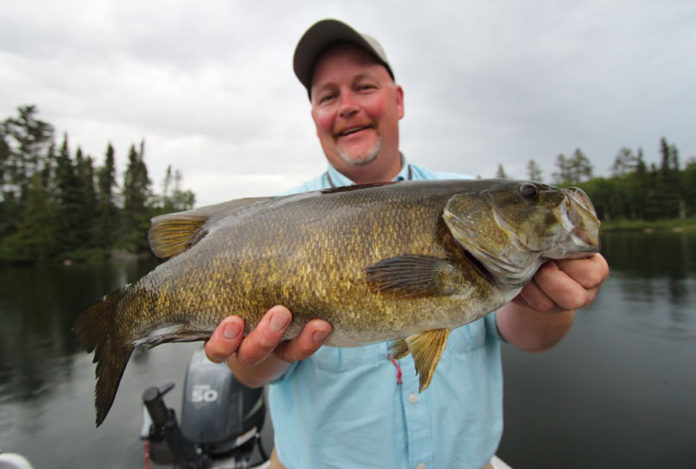Written by: Ted Putnam, Hawk Lake Lodge
Ted Putnam owns Hawk Lake Lodge in Ontario—the 2019 Orvis International Destination of the Year—which is known for fantastic smallmouth fishing. We asked him to list three flies that he’d never leave home without when chasing the gamefish he knows so well. Ted not only delivered on that, but also provided some valuable tips about how and when to use each one. —Evan Jones
A mentor of mine once told me to always be prepared to attack the water column in three distinct areas—surface, sub-surface, and bottom—no matter how the water initially reads or presents itself. Fish are inevitably going to be feeding in one of those three zones, and you should pack flies that cater to each when heading out for the day. If I were stranded on a lake, river, or stream and had to pick just three flies to catch smallmouth, I’d choose a Bass Popper for the surface, a Woolly Bugger for the sub-surface, and Clouser Minnow for the bottom. The beauty of these patterns is that they can cover nearly any depth, and are effective in a wide range of conditions. By having multiple colors of each, you can tempt bass with dozens of different possibilities, all with just a handful of flies.
Bass Popper

For surface fishing, the obvious choice is a Bass Popper. There is no better way to catch smallies than seeing the explosive strikes as they rocket out of the water. Insects and other invertebrates are an important part of a bass’ diet, and this fly can mimic many of them. Color is important, so be sure to have both light and dark examples, as well as species-specific color patterns (think frog). If you don’t get any strikes within a few minutes, try changing colors until you find what the fish prefer at that moment.
Woolly Bugger

The Woolly Bugger should be in everyone’s fly box, as it’s both simple and versatile, meaning a few different variations can make it look like anything from a leech to a crayfish, both key food sources for hungry bass. When unweighted or using a lighter bead head, this fly fishes well throughout the middle of the water column. With a heavier tungsten bead or some lead wraps, it can also be used to fish deeper water. Woolly Buggers not only catch many types of fish, but can be used in any type of water, from ponds to creeks to larger rivers.
Clouser Minnow

Moving further down the water column, there is no better fly than the Clouser Minnow. Nearly every species of fish feeds on minnows, and bass are no exception. The beauty of a Clouser is two-fold: first, the colors can be changed to look like nearly any type of baitfish within your ecosystem, from perch to Cisco fry. Determine what your bass are feeding on and adjust accordingly. Second, Clousers can be fished throughout the water column. When weighted, they dart along the bottom like prey looking for cover. Unweighted, and they could be sipping microscopic insects on the surface. How you fish this fly is up to you, and the options are nearly limitless.
Credit: Source link






























